 |
 |
 |
| |
Inconsistent Testing in HIV+ for Top
Liver Cancer Risk Factors: HBV, HCV, Alcohol
|
| |
| |
"Assessment of risk factors for hepatocellular carcinoma in HIV care and treatment programs across 31 countries: A cross-sectional survey"
"Serological testing for HBV and HCV infections is generally available," the IeDEA team concluded, "but rarely performed routinely in Africa."
10th IAS Conference on HIV Science (IAS 2019), July 21-24, 2019, Mexico City
Mark Mascolini
Across the globe, HIV clinics inconsistently provide routine testing for HBV or HCV infection, two major modifiable risk factors for hepatocellular carcinoma [1]. This 55-clinic, 31-country analysis found that just over half of these clinics routinely assessed people for alcohol use, the third major modifiable risk factor.
International Epidemiologic Databases to Evaluate AIDS (IeDEA) researchers noted that liver cancer ranks as the fourth leading cause of cancer deaths across the world. The 2015 Global Burden of Disease Study listed alcohol use, HBV, and HCV as the three main risk factors for liver cancer. Serologic testing can screen for hepatitis B surface antigen (HBsAg) and anti-HCV antibody, and viral load testing can confirm infection with either virus.
To determine screening and confirmatory testing rates for HBV, HCV, and alcohol use worldwide, IeDEA investigators conducted a cross-sectional web-based survey at IeDEA HIV care and treatment sites. These sites completed surveys from December 2014 to September 2015. The analysis embraced 55 HIV centers in 31 countries in 6 regions: Asia-Pacific, Latin America, West Africa, Central Africa, East Africa, and Southern Africa. Most sites surveyed (80%) were urban, and two-thirds (69%) were tertiary-care centers. About one third of centers (36%) were in low-income countries and one third (31%) in lower-middle-income countries. Three sites (5%) were in high-income countries. The centers treated more than 550,000 people with HIV infection.
In Latin America and the Asia-Pacific, 80% or more clinics routinely integrated HBV and HCV testing into HIV care. In contrast, 20% or fewer clinics in Central Africa or Southern Africa and no clinics in East Africa or West Africa routinely made HCV testing part of HIV care. About 20% to 60% of clinics in the four African regions made HBV testing a routine part of HIV care.
All clinics in Latin America and about 85% in the Asia-Pacific used HCV antibody serology to screen for HCV infection. Only about 10% of clinics in those two regions also relied on HCV viral load testing. About half of African clinics used HCV antibody serology, while smaller proportions in West, East, and Southern Africa (and about half in Central Africa) used HCV antibody rapid testing. About 10% in East and Southern Africa used HCV viral load testing, while none in West or Central Africa tested for HCV load.
All Latin American clinics and about 80% in the Asia-Pacific used HBsAg serology to screen for HBV infection. Much smaller proportions in both regions used an HBsAg rapid test or tested for
HBV viral load. Across the four African regions, about 50% to 70% of clinics used HBsAg serology, while higher proportions in West and Central Africa and lower proportions in East and Southern Africa used an HBsAg rapid test. No clinics in West Africa and about 10% to 25% in the other three African regions tested for HBV viral load.
Across all six study regions, proportions that "see alcohol consumption as a major problem in your clinic" ranged from about 20% in the Asia-Pacific and West Africa to about 65% in East Africa. About half of sites in Latin America, Central Africa, and East Africa used a structured survey like AUDIT-C to assess patients for alcohol use, while under 20% in the other regions used a structured test like AUDIT-C. Proportions of clinics that routinely assessed people for alcohol consumption ranged from about 20% in West Africa to about 70% in East and Southern Africa. About one quarter to one half of African clinics "never" assessed patients for alcohol consumption, while smaller proportions in Latin America and the Asia-Pacific "never" assessed for alcohol use.
Throughout all six study regions, the highest proportion of clinics used transaminase levels to assess liver disease, while lower proportions used abdominal ultrasound, liver biopsy, or Fibroscan (in that order). No clinics in West or Central Africa used Fibroscan.
The researchers cautioned that most sites surveyed provide tertiary care and thus do not represent HIV clinics across these regions. "Serological testing for HBV and HCV infections is generally available," the IeDEA team concluded, "but rarely performed routinely in Africa." Routine testing for HBV and HCV varied widely across regions, they added, including across high-burden countries. Confirmation of HBV or HCV replication and screening for hazardous alcohol use "were less frequently implemented globally," and diagnostic tools for assessing liver disease stage "are poorly available in low-income countries."
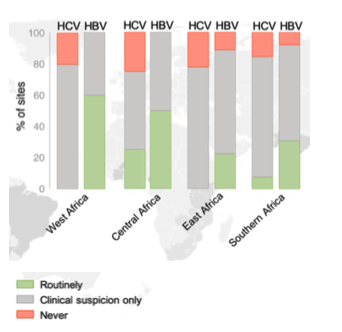
Reference
1. Mugglin C, Coffie P, Dabis F, et al. Assessment of risk factors for hepatocellular carcinoma in HIV care and treatment programs across 31 countries: A cross-sectional survey. 10th IAS Conference on HIV Science (IAS 2019), July 21-24, 2019, Mexico City. Abstract MOAB0204.
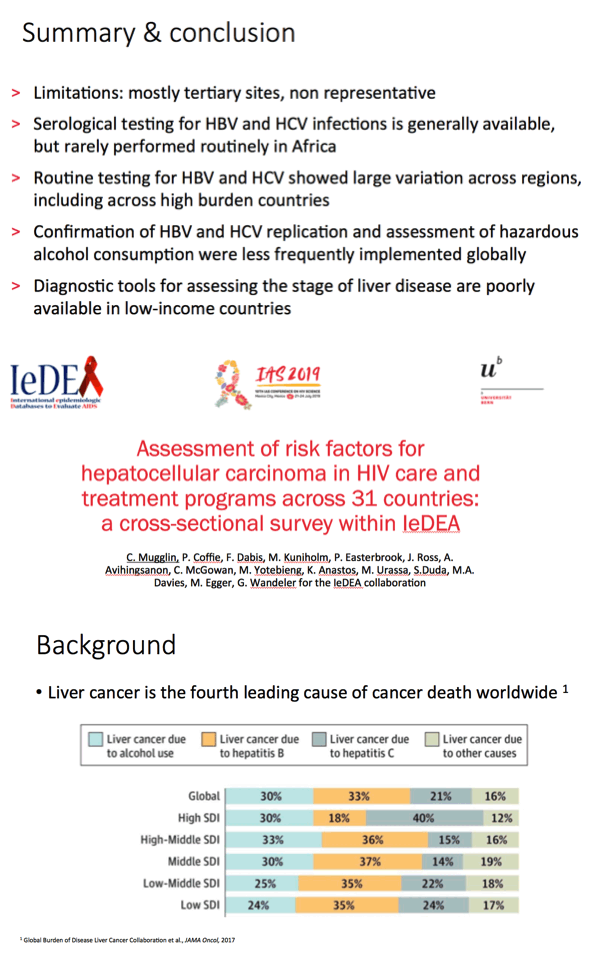
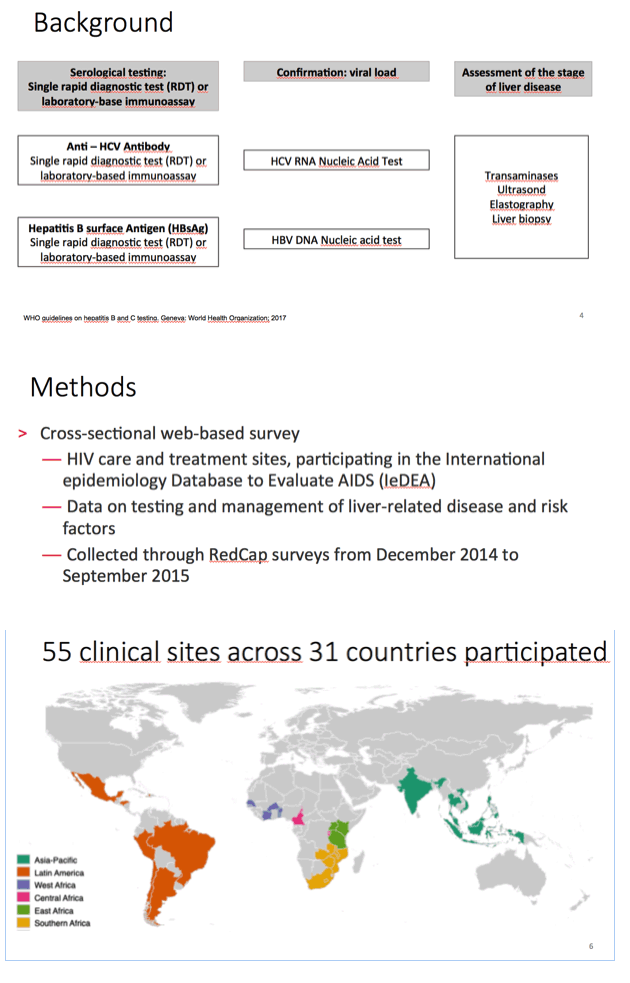

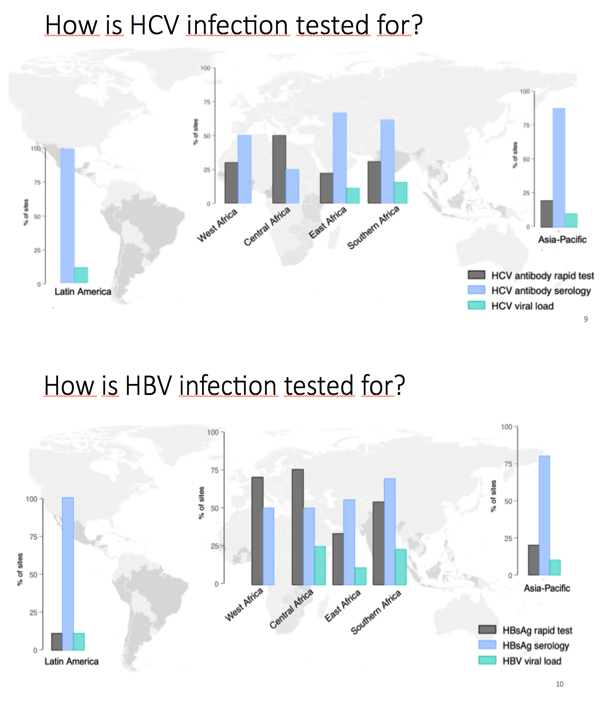
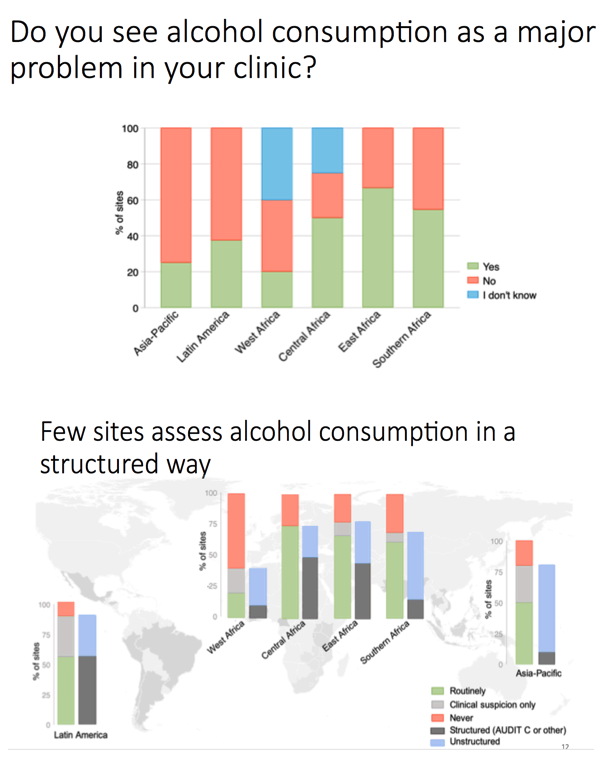
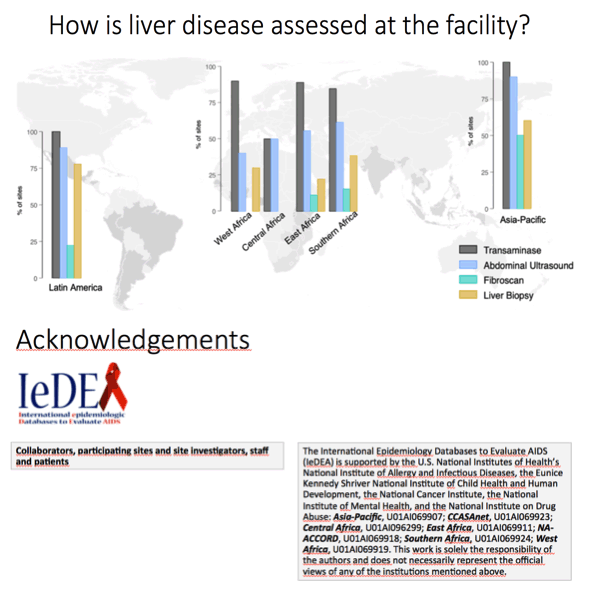
|
| |
|
 |
 |
|
|